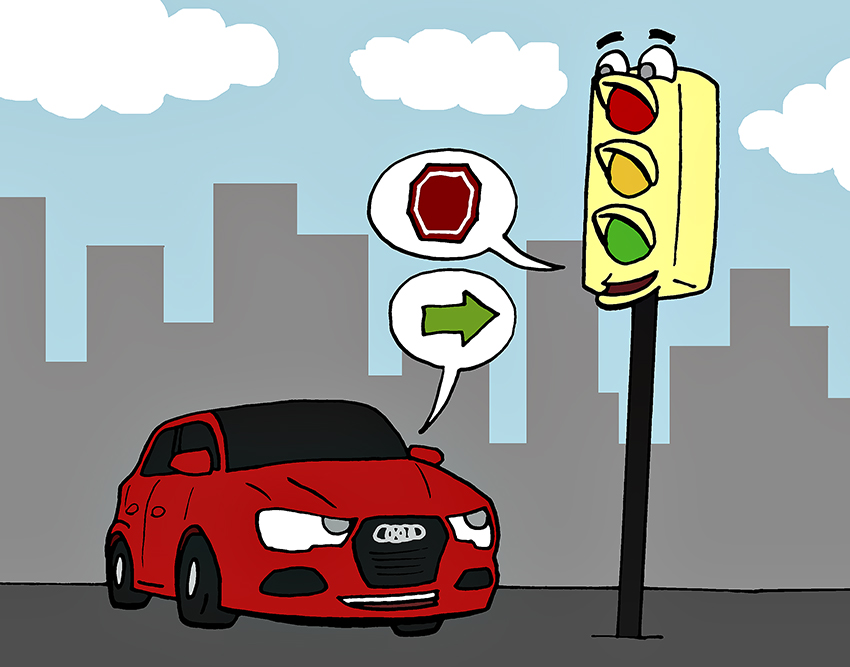New Audi vehicles will use vehicle-to-infrastructure communication similar to technology developed by a group of UT computer science researchers.
Starting in 2017, Audi will manufacture cars equipped with the ability to receive information from traffic lights, such as how many seconds are left on a red light or whether a green light is about to turn yellow. Such vehicle-to-infrastructure and, eventually, vehicle-to-vehicle communication brings the UT researchers closer to their goal of making traffic lights obsolete.
The UT research team introduced a technology called autonomous intersection management, which allows vehicles to communicate with traffic lights. The researchers behind UT’s Autonomous Intersection Management Project designed it with both semi-autonomous and autonomous vehicles in mind.
“The idea was to rethink what would get autonomous cars through intersections,” said Peter Stone, UT computer science professor and director of the Autonomous Intersection Management Project. “Rather than traffic signals or stop signs, cars approaching the
intersection call ahead and say exactly when they want to arrive.”’
The intersection-managing technology takes into account a vehicle’s lane, velocity and acceleration to determine whether it can safely pass. Cars are responsible for crossing the intersection within a certain margin of error.
This method replaces traffic lights with a timed and more efficient criss-crossing of cars at intersections.
Audi will release their new technology as a luxury add-on to traditionally-driven cars, bringing the industry one step closer to fully autonomous vehicles.
“This is designed not as a safety feature, but a comfort and convenience feature,” Anupam Malhotra, general manager of Audi’s connected vehicles and services division, said in a press release.
Companies such as BMW and Volvo have announced plans for semi-autonomous vehicles. Others, including Google and Tesla, are creating driverless cars. Though these cars can prevent some accidents caused by human error, they raise their own safety concerns.
One semi-autonomous car model, Tesla’s Model S, features adaptive cruise control along with radar, a camera and ultrasonic location sensors. In May, a Tesla Model S driver died in an accident while using the semi-autonomous autopilot function. The car’s autopilot failed to brake, and it crashed into an 18-wheeler that turned left in the same intersection. The owner was watching “Harry Potter” and did not press the manual brake.
Google’s self-driving cars have also been in several accidents, but according to Google, they were the result of human error. The accidents were often the result of being rear-ended, side-swiped or hit by a car driving through a red light.
Because autonomous cars can drive and navigate different environments without any human control, introducing more self-driving cars could reduce traffic and work toward eliminating human error, such as tailgating and intoxicated or aggressive driving.
“Back when we started in 2003, people thought that it would be decades from then before [autonomous vehicles] would be viable,” Stone said. “Now it seems clear that there will be autonomous cars in the near term, but it’s not a technology barrier anymore — now it’s a matter of whether it’ll be cost-effective and whether the laws and insurance policies can be updated in time.”















